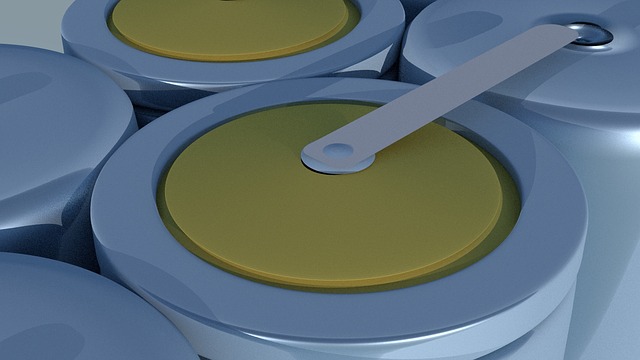What do you think about 18650 USB battery?
Jul 11, 2019 Pageview:1114
Every day, more and more of our electronic devices are using 18650s, which is a very good reason to learn about them. They are rechargeable batteries properly called “18650 cell”. It has a 3.7 voltage and comes in two types, protected and unprotected. Protected are more recommended. Their average charge time is about 4 hours, which is likely to variate depending on amperage of the charger. This is everything you need to know about them.
How to choose 18650 USB battery
You have to consider 4 main things, capacity and discharge current, soldering tabs, protection, and rewrapping.
When looking for capacity and discharge current, you need to consider them because they limit maximum safe discharge rate. This occurs in the way such that high capacity 18650 batteries have very high capacities as well, but maximus continuous rate is rather small.
On the other hand, the batteries that are able to provide higher continuous rates, tend to have much smaller capacities. Read review and recommendations because a lot of manufacturers tend to overestimate the capacities of the batteries they manufacture.
You should also consider whether it has soldering tabs or not. Issues with your batteries might often come from the replacements your chose. When changing a battery to a 18650, even if the previous one was also a 18650 the new one has to be from the same manufacturer, have the same capacity, the same charging and discharging currents, and the same range of the previous battery. If you are not absolutely sure of how your battery works or which where its characteristics, or you are just not able to access the same model, your go-to batter is a OEM.
In addition to this, look for protected batteries. Considering that you are charging them and discharging them constantly, the fact that some batteries come with protected built-in protections is great. These protections monitor parameters and protect the battery itself from any danger by turning it down when the standard conditions are altered. When you have protections the capacity of the battery might be slightly smaller in general, however, you reduce a variety of risks.
Finally, avoid rewrapped batteries, which are usually cheap batteries rewrapped and sold more expensively because of the brand they carry.
Advantages and disadvantages of the 18650 USB battery
Advantages
1. The capacity if the battery is between 1200mah- 3600mah. The general battery only has around 800.
2. their life is longer. The normal use of the cycle life can be around 500 times more than ordinary batteries.
3. Safety performance. No risk of explosion, combustion. They are also non-toxic, non-polluting and have a RoHS trademark certification. They are safe under high temperature performance, 65 degrees conditions.
4. The voltage is rather high, at around 3.6V, 3.8V and 4.2V. Compared to the nickel-cadmium and nickel-metal hydride battery with 1.2V voltage, the difference is significant.
5. No memory effect in the charge. The remaining power doesn’t have to empty for it to function correctly.
6. Small resistance. The internal resistance Is lower. This supports large discharge current polymer lithium battery, and makes it ideal for remotes, for example.
7. the battery can be combined with 18650 lithium battery pack
8. they are very versatile and can be used in a number of electronic devices.
Disadvantages
1. The volume doesn’t allow for customizable and transformable sizes.
2. The 18650-lithium battery is likely to suffer a short-circuit or explosion. This is relative to the polymer lithium battery. General batteries have less obvious shortcomings.
3. The production of these batteries is designed so that the line is protected and prevents the battery from being too charged, and lead to discharge. The basic materials of these batteries are lithium cobalt oxide materials, which are unable to discharge larger currents, and are security poor sometimes.
4. The conditions of the production of the 18650-lithium battery are much more demanding, which increases production costs. Increased production costs call for increased prices to purchase the battery when compared to general batteries.
How do you use 18650 USB battery properly?
Properly is understood as in a way that makes them last as much as possible, and prevents them for being discharged faster. There are some things you need to know, and some things that are recommended to do.
First of all, most modern 18650s have life cycles of 300 - 500 (charge, discharge cycles). When they present high drain situations, these number is decreased into 200 cycles. Going over the maximum discharge current is likely to reduce the cycles to even 50. If you use the battery optimally, you are actually likely to reach more than the pre-established 500 cycles. Some chemistries can cycle thousands of times before reaching the 80% capacity (which is when you should stop using them). In order to achieve ultimate conditions for your battery, the first thing you need to worry about is temperature. These batteries are usually between 20-25°C, deviating from these temperatures is likely to cause a reduced efficiency in the battery. When going to extreme temperatures, like below 0°C, or above 70°C, the cell degradation will be much faster than normal. Especially when it comes to -0°C, charging the battery can cause it to have a particularly fast degradation. A way in which extreme temperature change happens that most people don’t notice is when the cells overheat, when they are hot to touch it means that you are probably over stressing it, and are supposed to let it rest. Once the cell reaches temperatures over 60°C, it might have permanent damage, and could be potentially dangerous.
Also consider only charging it partially, meaning you use 3.8V instead of the 4.2V it has the capacity for. Capacity is decreased when you do that, but the life cycles and overall life of the cell become longer and better. Overcharging increases the capacity but it is very dangerous since it could cause for potential fume release, and could damage your cells faster than usual.
- Prev Article: Show more about LiPo battery swelling
- Next Article: You should know more about lithium battery inventor
Leave Message
Hottest Categories
-
Hottest Industry News
-
Latest Industry News











